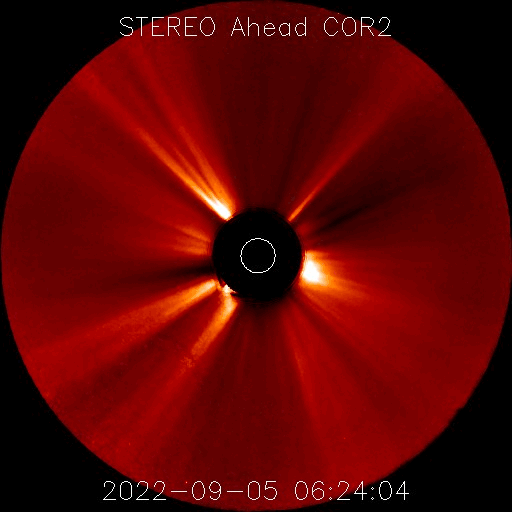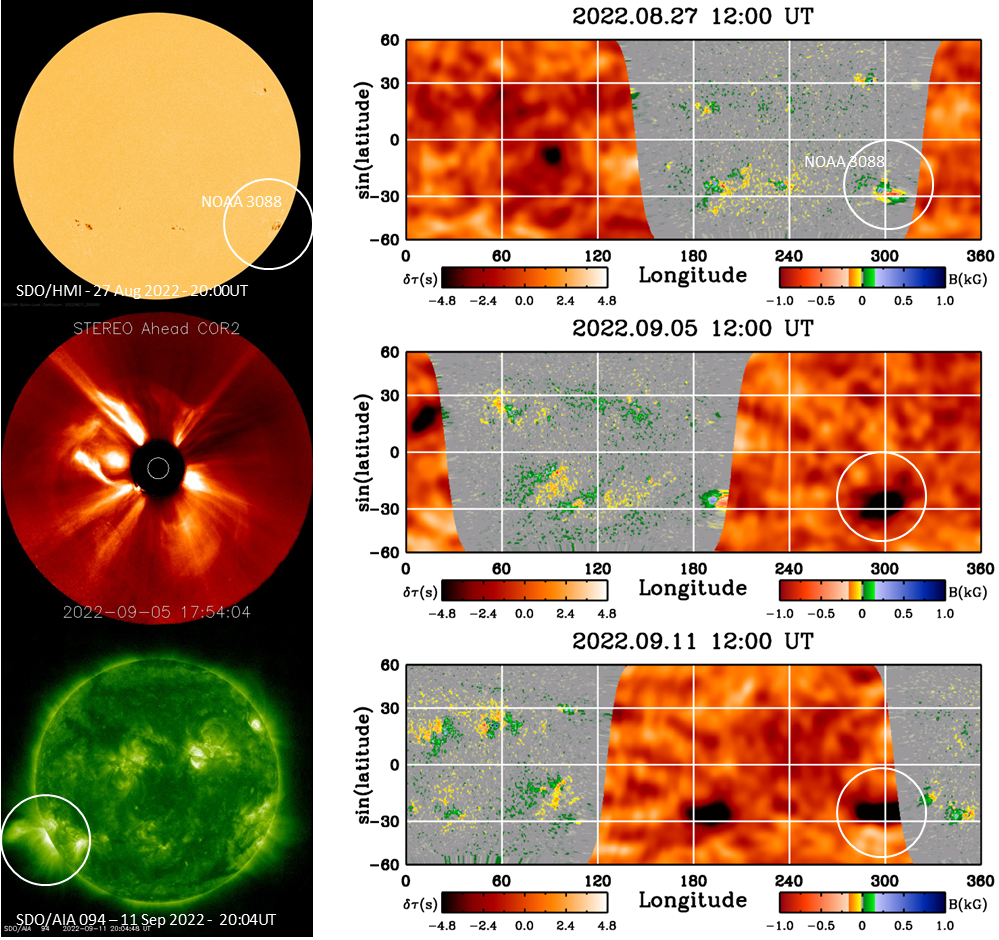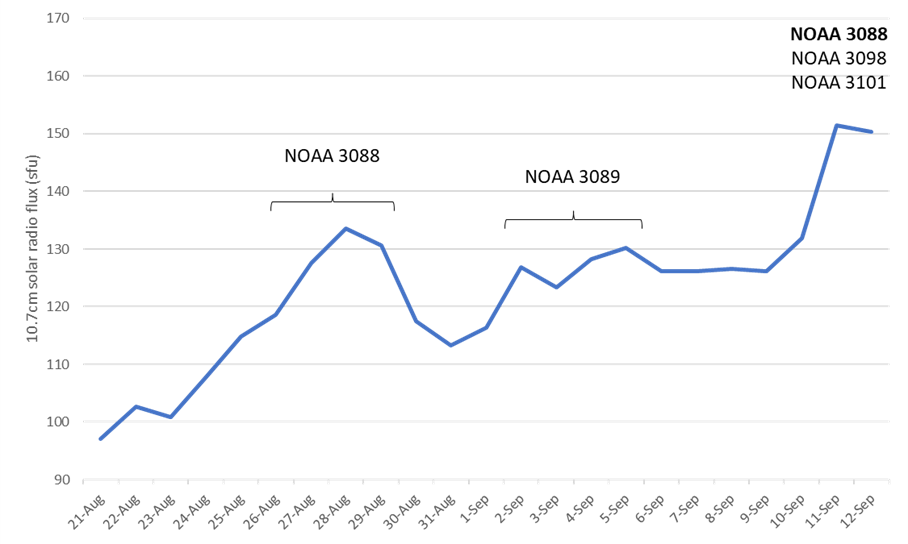The previous STCE Newsitem discussed the complex and flare-productive active region NOAA 3088, commenting on the continued activity while the sunspot group had already well rounded the southwest solar limb late on 28 August. On 5 September, it produced a halo CME (coronal mass ejection) while directly opposed to the Earth on the farside of the Sun. The COR2 instrument on board STEREO-A, which trails the Earth now by less than 20 degrees (or about 50 million km), was able to image this CME in all its splendour as can be seen in the imagery underneath. The plane-of-the-sky speed of the CME was calculated to be well over 1000 km/s. Interestingly, early on 8 September, the greater than 10 MeV proton flux very gradually started to increase, but never reached the alert threshold. The proton flux enhancement is thought to be a late effect from the farside activity on 5 September, as there were no obvious, more recent, strong solar events in a position that may have affected the earth environment.

NOAA 3088's farside transition can nicely be tracked in the synoptic maps underneath right, showing the entire solar surface between latitudes +60 and -60 degrees. They are compiled from full disk SDO/HMI magnetograms, which is the gray-green-yellowish colored portion portraying the earth-view, and from helioseismograms (JSOC/Stanford: http://jsoc.stanford.edu/data/timed/), which is the orangish colored portion representing the farside view. In the helioseismograms, the dark spots are areas of enhanced magnetic activity such as e.g. sunspot groups. The location of active ragion NOAA 3088 is indicated with a white circle on the map, as well as in the SDO imagery (upper left: white light ; lower left: extreme ultraviolet (EUV)). Note that though the dates are the same (resp. 27 August, 5 and 11 September), the timings between the synoptic maps and the other images differ by a few hours.

The dates in the figure above were chosen to show resp. NOAA 3088 just before its rounding of the solar southwest limb, the halo CME, and just before NOAA 3088's rounding of the southeast solar limb. The region announced its reappearance with tall and dynamic coronal loops (in EUV), and had apparently already an influence on the 10.7 cm solar radio flux on 11 September, which enhanced with about 20 units from 131 to 151 sfu (solar flux unit, with 1 sfu = 10-22 W m-2 Hz-1) from 10 to 11 September. The graph underneath shows the evolution of the solar radio flux since 21 August. The data were corrected for solar flare contributions, i.e. the 17UT or 23UT value was taken if the 20UT value was flare-affected, such as on 28 August. The influence of NOAA 3088 (late August) and NOAA 3089 (early September) can clearly be distinguished. The fast rise on 11 September is most likely due to the reappearance of NOAA 3088, but increasingly complex active regions NOAA 3098 and 3101 in the northwest quadrant are almost certainly contributing too. So far, the freshly returned NOAA 3088 has shown little flare activity, but this may change in the days to come.

UPDATE: The Parker Solar Probe (PSP) was nearing its perihelium on the farside of the Sun (as seen from Earth) when it flew through this CME. More info and a clip are in this story from 20 September 2023 at ScienceAlert. A direct link to the YouTube movie is here. A sketch with the location of the satellite, STEREO-A and Earth is here.





